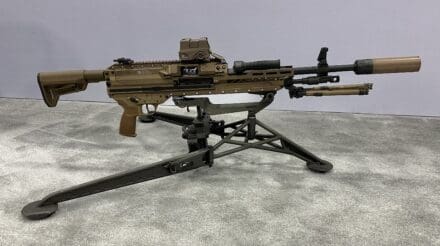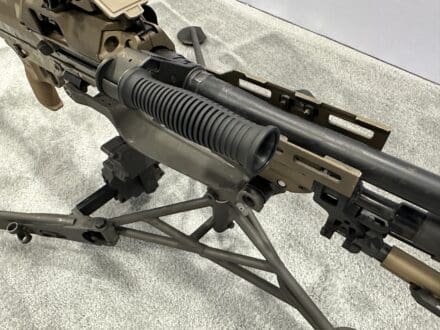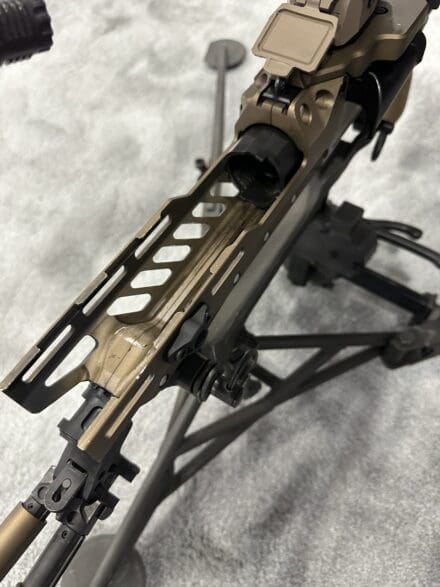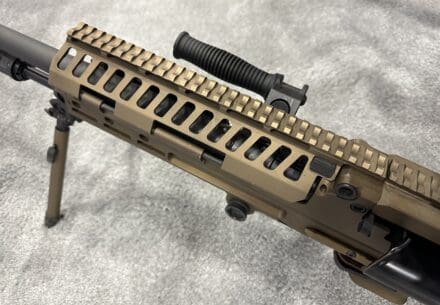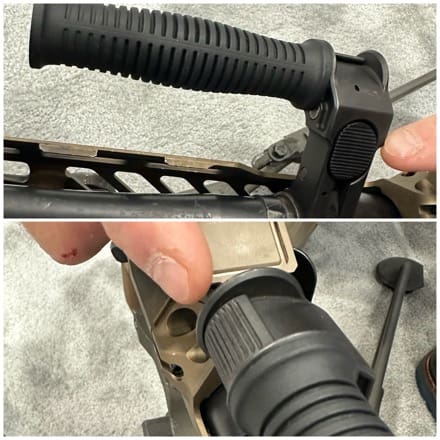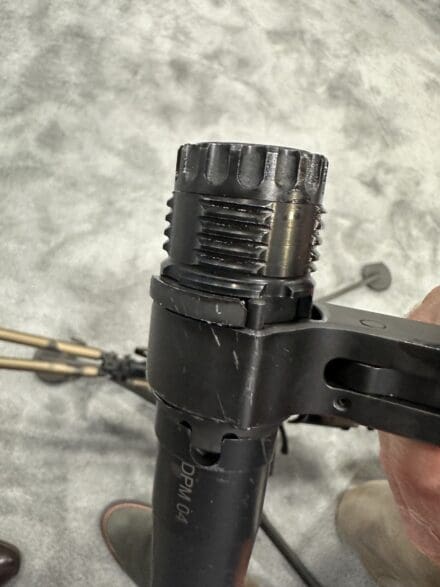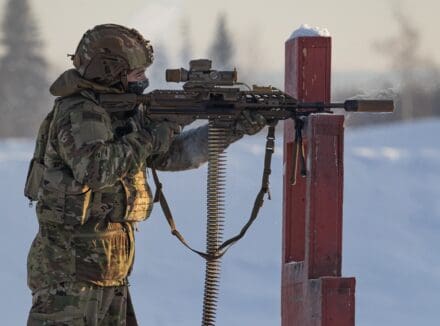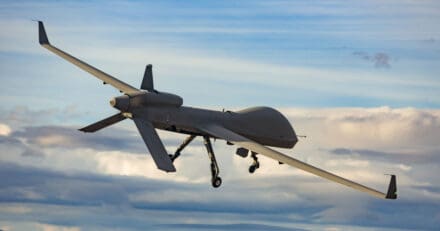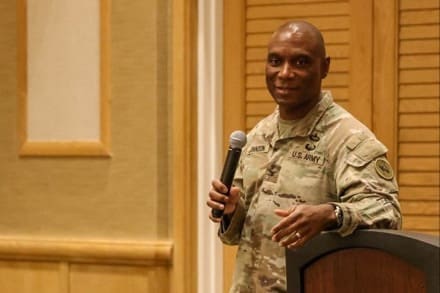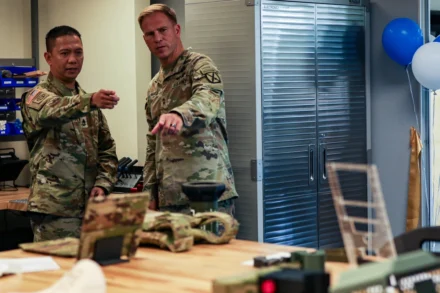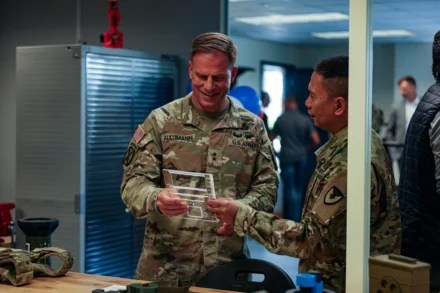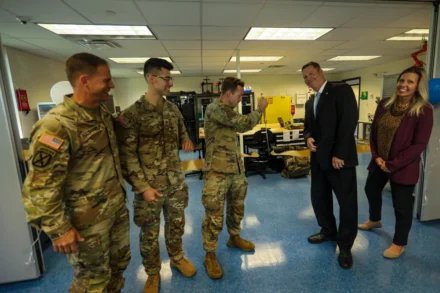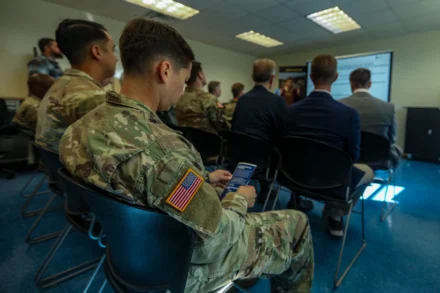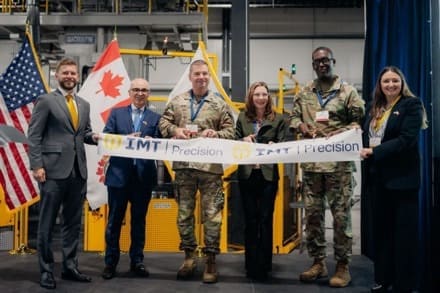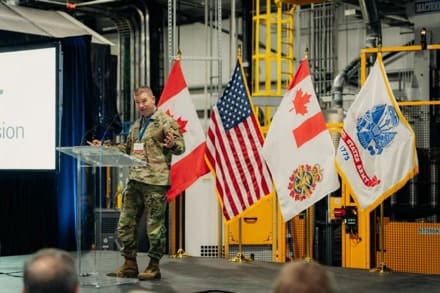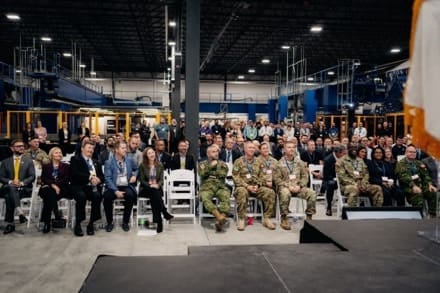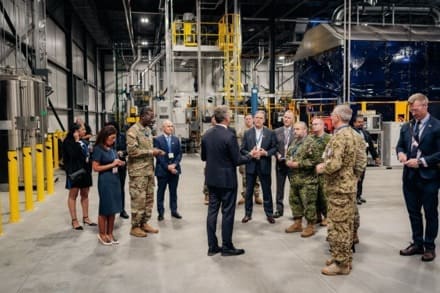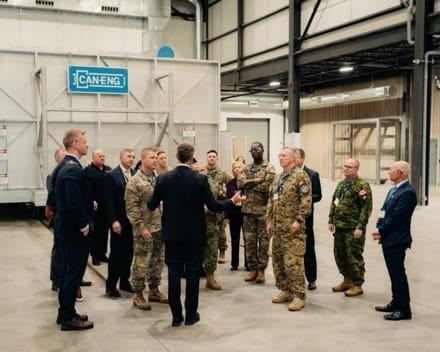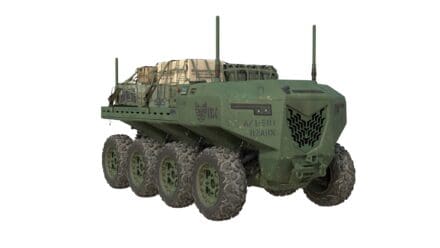This is an XM250 in 6.8x51mm. Essentially, it’s the same Automatic Rifle the Army adopted under the Next Generation Squad Weapons program with one exception, it has a quick change barrel. That feature, makes it quite suitable to fulfill the role as a sustained fire, belt-fed machine gun.
This isn’t a new characteristic. It was part of the original design, but the Army didn’t want a quick change barrel as part of NGSW. So, in order to save weight, it was left off. This version of the SIG light machine gun is referred to as the “World” configuration as it is how the gun is marketed to everyone else, except the US Army.
What Makes It Different
As you can see, it is configured here with no top cover over the barrel to facilitate quick barrel changes. However, SIG tells me there is a hinged cover available, as seen on the MG338.
The barrel is locked in place via two buttons. It can’t be removed or secured in place without simultaneously depressing the rocker and secondary locks. Additionally, the plunger must be depressed to fully engage the handle lock.
Here you can see the lugs on the barrel which lock the barrel into the receiver.
Why It Matters Now
The Squad Arms and Ammunition Configuration study led to the development of the 6.8 cartridge and Next Generation Squad Weapons. Afterwards, a study was conducted for the Platoon called, aptly enough, the PAAC study. Although it was completed well over a year ago, Army leaders continue to evaluate the study’s findings to decide on a path forward.
One of the key decisions is how to proceed regarding a machine gun for the platoon. Options under discussion include adopting the 6.8 common cartridge architecture for the role, as well as seeking out an additional cartridge such as the 338 Norma Mag option currently under adoption by USSOCOM.
Regardless of the caliber choice, fielding of the initial XM250 Automatic Rifles to the first units is already highlighting the disparity between the new 6.8 round and its 7.62 predecessor. The current M240s are heavier, offer reduced range and lower delivered energy on target than NGSW.
As of right now, NGSW is only intended for the close combat force consisting of Infantry, Cav Scouts, Combat Engineers, SOF, and select enablers. That means there are just over 13,000 XM250s being fielded to replace M249 SAWs in those formations. This leaves tens of thousands of SAWs across the Army. Chances are good, those will be replaced with XM250s over the coming years. However, the issue is even larger for the M240. No matter the desired course of action for caliber of choice post-PAAC study decision, the Army has to decide what to do with the ~120,000 M240s in inventory.
Many have suggested that they simply reconfigure them to fire the new composite case 6.8X51mm. The thought process is that the Army already owns them and they are serial numbers on the books; no need to buy new guns.
Considering the number of guns involved, it will easily take five years or more to develop a barrel and operating system capable of reliable, long-term firing of the high pressure 6.8 cartridge and to actually reconfigure the guns. It is likely that up to 20% of the guns currently in service ought to be coded out and replaced. They are old and have seen a lot of service over the past 30 years. If the Army does, in fact need all 120,000 guns, that means they’ll have to purchase more M240s to replace the worn-out examples of an almost 70-year-old design. Detractors of this plan ask why the Army would want to buy more old guns that they’ve already decided to replace.
Adoption of a new gun for the sustained fire role is likely a more cost effective solution in the long-term. If the Army desires to transition to 338 NM that has to happen because there’s no gun currently in the inventory to do it. If they don’t, one option is to pure fleet the XM250, with quick change barrels, replacing both M249 SAWs and M240 MGs. In many ways, it’s an easy button. This moves all belt-fed guns to one caliber and one platform across the formation, simplifying doctrine, employment, training and logistics. It also makes the entire force more lethal, and reliable, with new guns which will last longer than modified legacy guns. It’s also a faster option than starting a new program.
No matter the near-term path forward, a version of the XM250 with quick change barrel will inevitably enter Army service.


